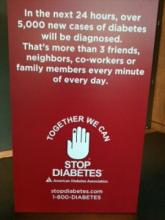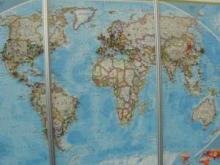While the World Health Organization suggests that more than 220 million people around the world have diabetes, and one study estimated 285 million people had diabetes in 2010, a more recent analysis calculated that 347 million people worldwide have diabetes, investigators reported in The Lancet. That’s more than double the 153 million cases worldwide 3 decades ago.
Type 2 diabetes typically begins in middle age, so aging populations play a role, as do rising rates of obesity, a major risk factor for the disease. Using the World Health Organization’s more conservative numbers, an estimated 3.4 million people died in 2004 from problems related to diabetes, 80% of them in low-income and middle-income countries.
It’s no wonder that I heard languages from all over the world being spoken at the American Diabetes Association (ADA) annual scientific meeting. The 17,600 attendees were invited to place push-pins on a world map to show where they’d come from. Some did, providing a snapshot of the international participation in the meeting.
Affluent countries whose physicians can more easily afford international travel to the meeting are more heavily represented, but the map still gives the impression of one world fighting a common disease. The keys to preventing or slowing diabetes are known and well shared — don’t smoke, eat a healthy diet, be physically active regularly (like 30 minutes of brisk walking 5 days per week), and maintain a normal body weight. If there’s one solution to this one-world problem, it may lie in finding a way for people of all nations to follow that advice.
Easier said than done. But as a major study presented at the meeting calculated, treating people at high risk for diabetes in the United States by either enrolling them in a lifestyle intervention program (to change eating and exercise habits) or by prescribing the drug metformin was extremely cost-effective compared with doing nothing.
Teaching people to “swim,” as it were, or throwing them a pharmaceutical life jacket, may be cheaper and better than expecting them to surf a tsunami.
–Sherry Boschert (@sherryboschert on Twitter)



